Welcome back to our journey through the annals of prehistoric Earth. In this installment, we delve deeper into the mysteries surrounding the extinction of some of the most fascinating creatures of the Ice Age. From the Cave Lion to the awe-inspiring sabre-tooth tigers, let us explore the lives and fates of these magnificent beings.
4. Cave Lion (Panthera spelaea)
The cave lion, the largest lion species ever roaming the Earth, could weigh as much as 800 pounds. Distinguishing themselves with a height of 1.2 meters and a length of 2.1 meters, they stood out from their modern counterparts. Ancient cave art suggests that they possessed a pointed, elongated muzzle and lacked the distinctive manes of contemporary lions.
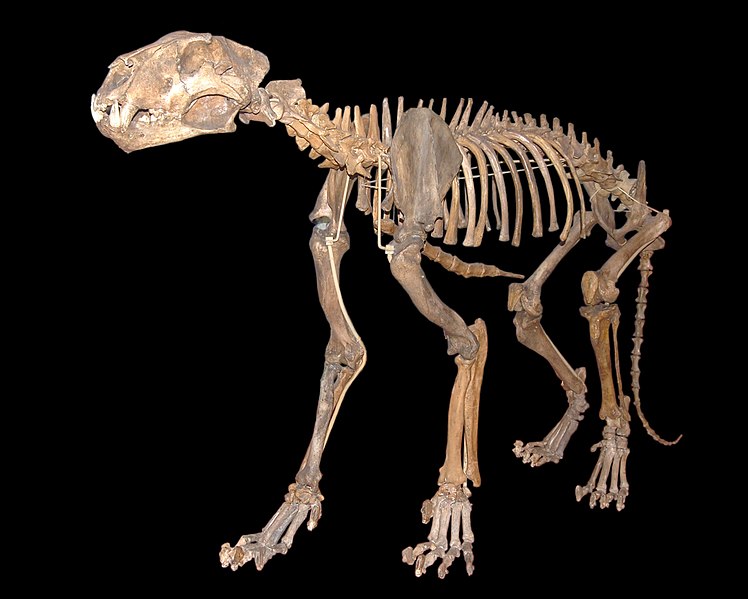
Skeleton in Natural History Museum, Vienna
Image by Tommy from Arad, CC BY 2.0 https://creativecommons.org/licenses/by/2.0, via Wikimedia Commons
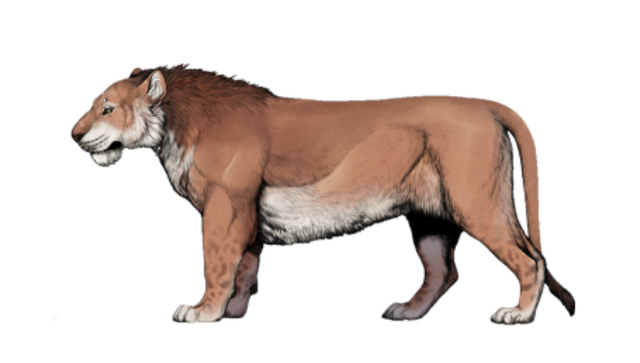
Mixewias, CC BY-SA 4.0 https://creativecommons.org/licenses/by-sa/4.0, via Wikimedia Commons
These majestic creatures belonged to the extinct Panthera genus and disappeared from our planet 13,500 years ago. The prevailing theory behind their extinction revolves around the scarcity of suitable prey, such as antelope, as the climate transitioned from open grasslands to forests. Human hunting, driven by the allure of meat, skins, and the elimination of competitors for food, likely played a pivotal role in their decline.
5. American Cheetah (Miracinonyx trumani)
Extinct around 12,000 years ago, the American cheetah, Miracinonyx trumani, was a North American feline closely related to cheetahs and pumas. These captivating cats were believed to resemble snow leopards, boasting adaptations for swift speed, including a short muzzle and slender proportions akin to modern cheetahs.
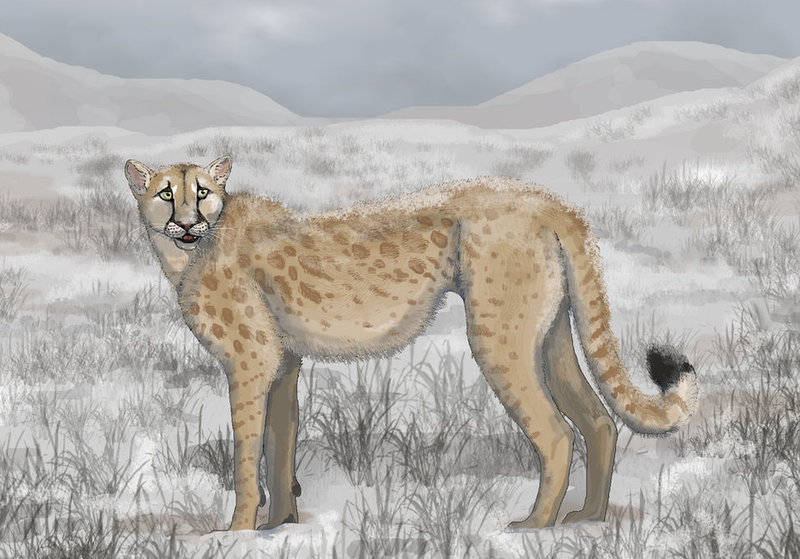
Sheatherius, CC BY-SA 4.0 https://creativecommons.org/licenses/by-sa/4.0, via Wikimedia Commons
Their primary prey consisted of mountain goats and sheep inhabiting cliffs and rocky terrains, where the American cheetahs employed their remarkable speed to close in on their quarry.
One fascinating conjecture suggests that these American cheetahs may have contributed to the remarkable speed of pronghorn antelopes, which can sprint at an astonishing 65 mph (104 kilometres per hour). Scientists speculate that the American cheetahs' pursuit of pronghorn antelope may have driven the evolution of such exceptional speed in these animals.
Ultimately, climate change, dwindling prey populations, and human hunting are believed to have sealed the fate of the American cheetah.
6. Irish Elk (Megaloceros)
Dubbed the "giant deer," the Irish Elk earned this moniker for good reason – it was the largest deer species ever to roam the Earth. These colossal creatures, which resided in Ireland and across Eurasia to Siberia, stood at an impressive 2.1 meters (6 feet 11 inches) tall. However, their antlers genuinely set them apart, measuring a staggering 3.65 meters (12 feet) in width and weighing 40 kilograms (88 pounds). These antlers were a sight to behold and remain iconic symbols of the Ice Age.
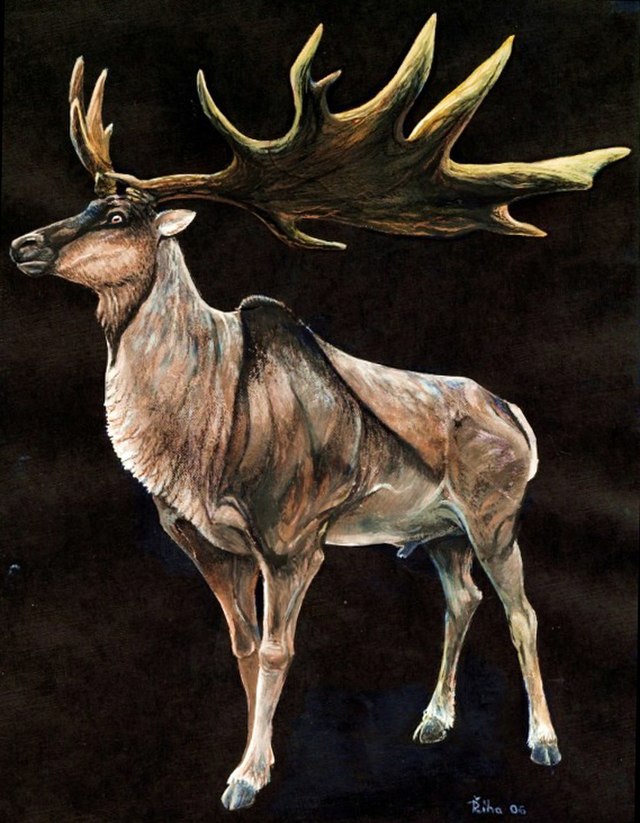
Irish Elk
Image by Pavel.Riha.CB, CC BY-SA 3.0 http://creativecommons.org/licenses/by-sa/3.0/, via Wikimedia Commons
Fossils suggest that Irish Elk lived from 400,000 to 8,000 years ago, eventually succumbing to extinction during the waning years of the Ice Ages. Initially, scientists believed their colossal antlers contributed to their downfall, as they might have become entangled in shrubs and trees during encounters with humans. However, modern theories lean towards climate change and hunting as the primary factors behind their gradual extinction.
Suppose you are eager to catch a glimpse of an Irish Elk today. In that case, you can find a skeleton at the Smithsonian Natural History Museum and several antlers on display at Warwick Castle in England. Additionally, fans of "The Hobbit – The Battle of the Five Armies" may recognize the digitized Irish Elk ridden by King Thranduil in the movie.
7. Sabre-Tooth Tiger (Smilodon)
Incredible sabre-tooth tigers, a species of big cats known for their elongated upper canine teeth measuring up to 7 inches in length, inhabited North and South America. Their astounding mouth gape of up to 120 degrees set them apart from modern-day big cats, which can open their jaws to around 60 degrees.
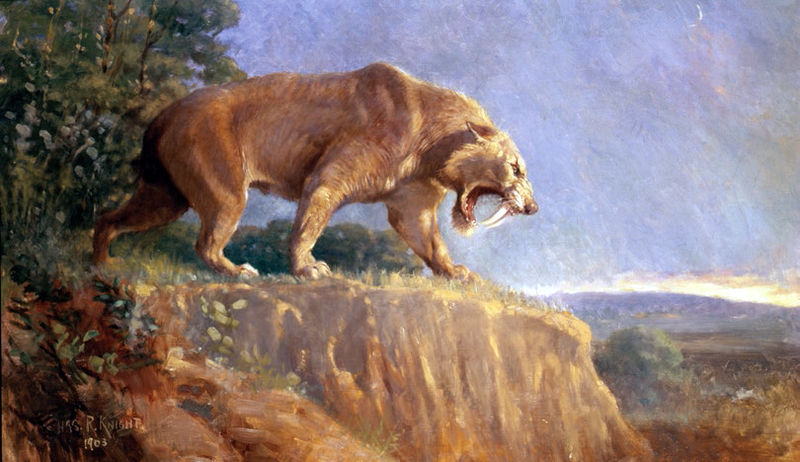
A painting of a saber toothed tiger by Charles R. Knight, Public domain, via Wikimedia Commons
Sabre-Tooth Tiger (Smilodon)
These formidable predators, belonging to the genus Smilodon, were named after their sabre-like teeth. Contrary to their name, they were not closely related to modern tigers; instead, experts believe they bore a closer resemblance to the clouded leopard in colouration.
With their muscular limbs and powerful claws, sabre-tooth tigers were likely pack hunters, preying on bison, deer, and other small mammals by ambushing them before delivering a fatal strike.
As apex predators, their extinction during the last Ice Age remains controversial. While climate change and human hunting are the leading theories, the exact cause remains elusive.
This list of seven extinct Ice Age animals provides a glimpse into the incredible diversity of life that coexisted with our early ancestors 12,000 years ago. However, it is worth noting that at least 27 megafauna species disappeared during this dynamic period.
Summary of Part Six and Part Seven: The Seven Extinct Ice Age Animals
- Dire Wolf: It became extinct 9,500 years ago.
- Mastodon: Died out 10,000 – 11,000 years ago.
- Woolly Mammoth: It existed 4,000 years ago.
- Cave Lion: Disappeared 13,500 years ago.
- American Cheetah: Extinct around 12,000 years ago.
- Irish Elk: Vanished 8,000 years ago.
- Saber-Tooth Tiger (Smilodon): Became extinct 10,000 years ago.
Part eight examines the Aftermath of Megafaunal Extinction: Ecosystem Transformation in Pleistocene Australia.
Leave a Reply